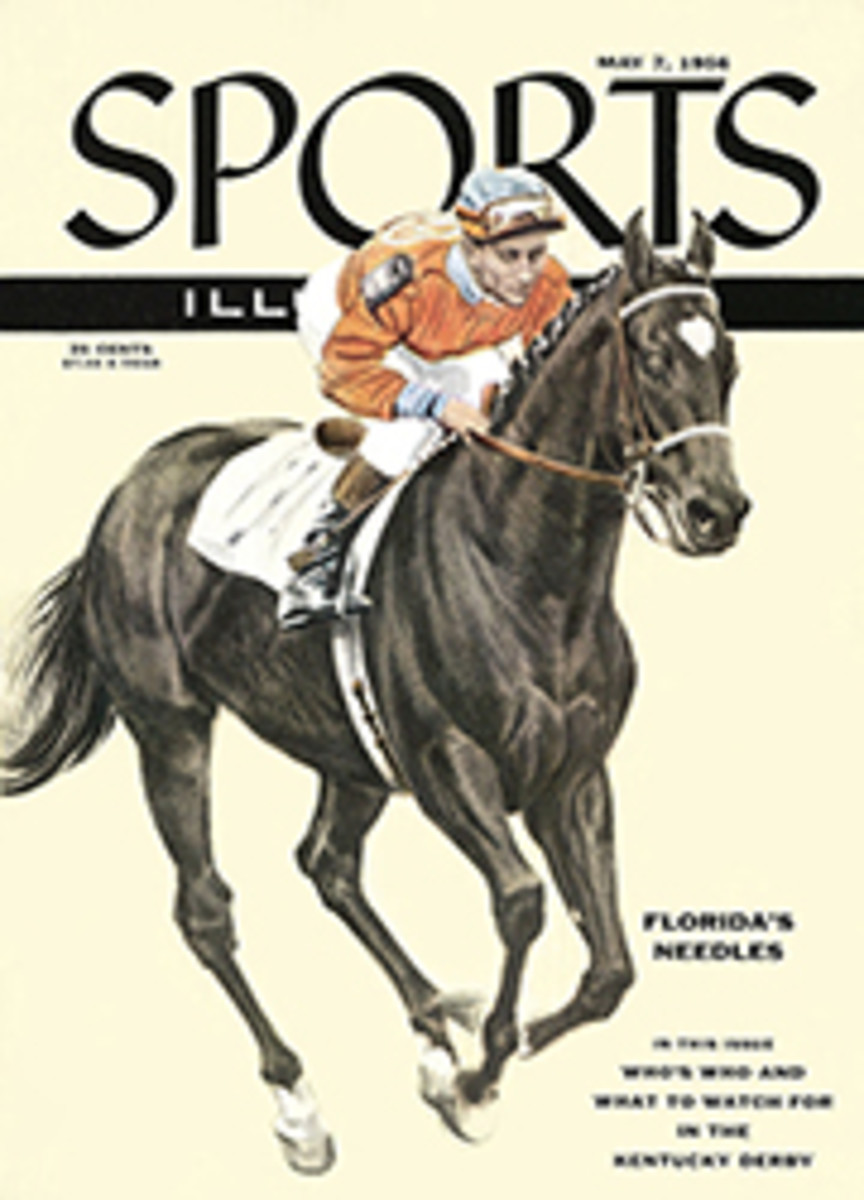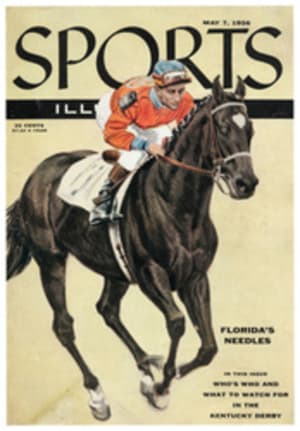
SEATTLE: CITY ON THE WATER
One event more than any other, the colorful, crowded Opening Day Regatta pictured on the preceding pages, brings into sharp focus the mass mania for boating that has overtaken the city of Seattle. The celebration, scheduled for May 5 this year, involves nearly a thousand boats decorated with signal flags, dancing girls and anything else the owners happen to think of. It is, in short, as big and uninhibited as a regatta can get. But in Seattle, the boating capital of the Northwest and perhaps the busiest yachting town in the country, the opening celebration is just one more party in a season filled with fun on the water.
Seattle is, in fact, a city of water. No less than 50,000 people own boats in and around the town, and a casual look at Seattle's geography (see map pages 50-51) will tell you why. Western Washington's metropolis rises almost straight out of sheltered Puget Sound, dividing the salty headlands of the sound from one of the nation's great aquatic playgrounds—a tranquil, 16-mile-long body of water called Lake Washington. Just north of Seattle's downtown office district lies smaller Lake Union, where a fortunate dentist, doctor, lawyer or businessman can look down on the tantalizing sight of his own boat moored and awaiting his leisure.
The city itself is almost surrounded by 193 miles of waterfront, including 100 miles of fresh-water mooring space. Cutting east and west through the town, the Lake Washington ship canal equalizes the 33-foot difference in water level between sound and lake, giving boat owners the run of about 2,000 miles of incredibly beautiful coastline dotted with small islands and safe harbors south all the way to Olympia and north to British Columbia and beyond.
In the past year alone, 34,573 pleasure boats carrying 275,781 passengers—almost half the population of the town—were checked through the Government Locks at the western end of the canal, with marine traffic jams on Memorial Day and the Fourth of July that would make a Chicago cop shrink back in horror.
To occupy this bustling mob of boating enthusiasts, there is a wide and happy variety of boating to be found right on Seattle's watery doorstep. For a working man on a tight budget, boating in Seattle means family outings in the precious daylight hours after quitting time in a $500 to $1,000 outboard cruiser. For an executive owning a $30,000 yacht, it may mean weeks of concentrated cruising out of Puget Sound to the islands of British Columbia and even Alaska. One typical boat-owning Seattlite might well be 13-year-old Billy Schumacher Jr., who last year won the national Class JU and AU stock outboard championships against some of the best racers in the world. But Billy is only one youngster picked from the large group of Seattle teen-agers who are ignoring cars for boats. The Seattle Outboard Association reports that nearly 50% of its 200 registered racing outfits are manned by teen-agers.
Another typical Seattle boat lover is a chap named George Prince, a transplanted Easterner, who lives on the shore of Lake Washington. George's pleasure comes from rowing a one-man shell right off his front yard in the same waters where the bellowing hydroplanes, like Willard Rhodes's Miss Thriftway, or Stan Sayres's hallowed "Old Lady," Slo-Mo IV, take their regular tune-up runs.
Then there is the Seattle obstetrician who sails off his home on Lake Washington, keeping a wary eye on his private dock, where a very special kind of storm warning may go up any instant. To keep the doctor posted, his wife hangs diapers on a pole. A single diaper is the first warning: "Patient going into labor." But two diapers herald the crisis: "For heaven's sake, turn to."
Rowing is a deeply meshed source of Seattle pride. Every spring and fall a big, graying Dane named Al Ulbrickson sends the University of Washington's famed eight-oared shells skimming over the lake in daily workouts. The university's Conibear shellhouse houses 17 eight-oared shells and six fours—all of them designed and built by George Pocock, a master builder who holds an American monopoly in construction of the light, thin-skinned craft. Scattered over the nation are the Navy's Rusty Callow and 10 other Washington-bred crew coaches, five of them trained by Ulbrickson himself.
This remarkable boom in fun afloat, besides creating a critical shortage of mooring space, has made Seattle and Puget Sound the playground for some of the nation's top boating events. In 1950, for example, Auto Dealer Stan Sayres took his Seattle-bred Slo-Mo IV overland to the Detroit River and won the Gold Cup. Exercising his right as champion, Sayres elected to defend his title on Lake Washington—which he successfully did for four consecutive years with Slo-Mo IV and her sister ship Slo-Mo V in front of home town crowds up to 500,000. Even last summer, when Joe Schoenith's Gale V won the Gold Cup back for Detroit, one eastern owner (Guy Lombardo) remarked wistfully: "It's a shame to take this race away from Seattle—this is the greatest boat race course in the world."
No sooner had the sounds of the race died down when an outfit called Greater Seattle Inc., a group of boat-loving boosters who had helped finance Sayres's earlier defenses of the Gold Cup, allotted $25,000 to create a new spectacle, the Seafair Trophy race. The Seafair will be run off August 4-5 and is sanctioned as the unlimited hydroplane championship of the U.S.
Built around the Seafair Trophy race will be another of Seattle's floating fiestas, a 10-day affair called Seafair Week, during which synthetic pirates cruise around town on festooned floats, and King Neptune's ship—a chosen derelict—gets burned by a nautical gang made up as Davy Jones and his pirates; water ski races, boat-to-boat parties and other nautical hi-jinks round out the celebration.
Buzzing angrily for attention through the uproar of regattas and hydroplane races are the small bouncing outboards which spin around Green Lake right in the middle of a staid residential district. Hardly a weekend passes without some sort of outboard racing. "A man could go broke just entering all the races," says Al Benson, veteran racing official. The outboard classic of the town is the annual Sammamish Slough race, a slam-bang run through a curving navigation ditch that connects Lake Washington to easterly Lake Sammamish. Each year, these outboard daredevils smash up thousands of dollars of equipment, racing through farm lands and low-hanging trees, under bridges and past treacherous, submerged logs. Some of the 50,000 spectators who line the 13-mile course occasionally lift a beached boat back into the water and help the driver on his way.
A quieter counterpoint to the pell-mell powerboats is provided by the large and growing colony of sailboat devotees. The heavyweights of the sailing fleet are the long (45 to 75 feet), stately sailing yachts, costing from $30,000 on up to $110,000. Premier event for these handsome auxiliaries is the annual Swiftsure Lightship Race, which for sheer ruggedness compares with any in the world as a test of the seaworthiness of a boat and the seamanship of its crew.
Says a longtime competitor, Insurance Executive Charley Frisbie: "This race belongs to the fellow who can beat into the wind. It takes a good crew, fine seamanship and a lot of luck to win."
For day sailors and class-boat racers, Lake Washington provides nearly ideal conditions. The Corinthian Yacht Club, limited exclusively to sailing, estimates that its 340 boats sail about 10,000 miles a year in club-sponsored races alone. Each Wednesday, an average of 120 boats—El Toros, International 14s, Penguins, Thistles, Stars and various larger classes—compete in the annual spring, summer and fall series of twilight races.
The current standout among Seattle sailors is Bill Buchan Jr., who last year won the Mallory Cup, symbol of the North American Sailing Championship. As with the Gold Cup, the Mallory Cup winner has the privilege of suggesting where the next race will be held; and Bill suggested Lake Washington, where the finals will be run off in Blanchard Senior Knockabouts September 8 through 13.
The sailors, however, are not the only ones who like to do their racing in comparative peace and quiet. A good portion of the powerboaters feel the same way; and for these more sedate cruiser men, Seattle offers a number of predicted log races, biggest of which is the 180-boat International Cruiser Race (SI, Aug. 22, 1955). Another top event is the Heavy Weather Race, for which 112 boats turned out on a freezing day last February. The Interclub Challenge Race, featuring the four top boats from each yacht club, winds up the season in September.
Another trend in powerboating—and perhaps the most significant trend in the whole Seattle yachting complex—is toward weekend family cruises. This year, there will be more than 120 such outings, some boasting as many as 85 boats. A wonderful salt-air democracy prevails over these excursions. "Plumbers and bankers, they're all alike on a family cruise," says Ev Henry, president of the Inboard Powerboat Association. "Once out on the water, they're all equal."
Henry added, "Five years ago, every club used to have 'stag' cruises—maybe five or six a year. Now it's down to one, because people have discovered that boating is a family affair. It's for everybody."
MAP
LUCILLE CORCOS
SEATTLE: YACHTSMAN'S PARADISE

